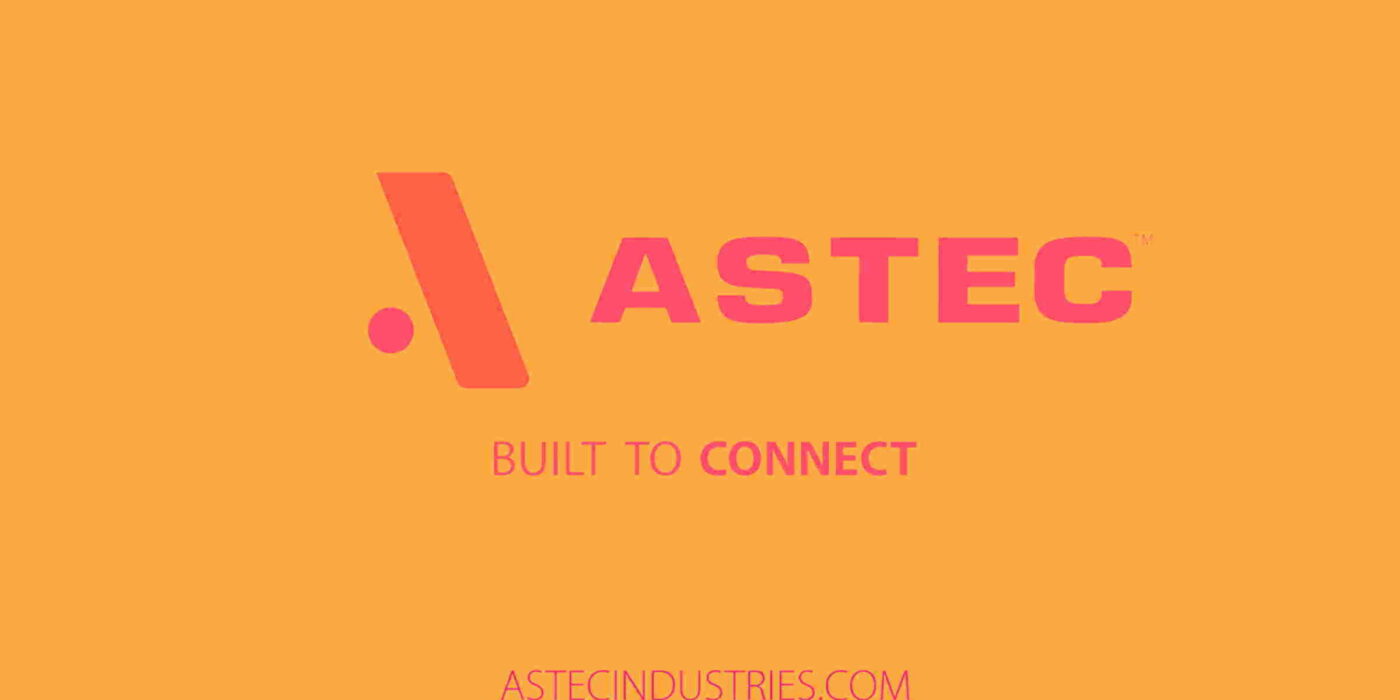
Construction equipment company Astec (NASDAQ:ASTE) fell short of the market’s revenue expectations in Q2 CY2025, with sales falling 4.4% year on year to $330.3 million. Its non-GAAP profit of $0.88 per share was 58.6% above analysts’ consensus estimates.
Is now the time to buy Astec? Find out by accessing our full research report, it’s free.
Astec (ASTE) Q2 CY2025 Highlights:
- Revenue: $330.3 million vs analyst estimates of $354.2 million (4.4% year-on-year decline, 6.7% miss)
- Adjusted EPS: $0.88 vs analyst estimates of $0.56 (58.6% beat)
- Adjusted EBITDA: $33.7 million vs analyst estimates of $25 million (10.2% margin, 34.8% beat)
- Raised adjusted EBITDA guidance for the full year
- Operating Margin: 6.5%, in line with the same quarter last year
- Free Cash Flow Margin: 2.7%, up from 1% in the same quarter last year
- Backlog: $380.8 million at quarter end, down 28.3% year on year
- Market Capitalization: $923.6 million"On July 1, 2025, we completed the acquisition of TerraSource, an adjacent manufacturer of materials processing equipment and related aftermarket parts. TerraSource has annual revenues in excess of $150 million, with over 60% of revenues from aftermarket parts and services"
"Astec reported another strong quarter building on its strategic initiatives to deliver consistency, profitability and growth," said Jaco van der Merwe, Chief Executive Officer.
Company Overview
Inventing the first ever double-barrel hot-mix asphalt plant, Astec (NASDAQ:ASTE) provides machines and equipment for building roads, processing raw materials, and producing concrete.
Revenue Growth
Reviewing a company’s long-term sales performance reveals insights into its quality. Any business can put up a good quarter or two, but many enduring ones grow for years. Unfortunately, Astec’s 3.7% annualized revenue growth over the last five years was sluggish. This fell short of our benchmark for the industrials sector and is a rough starting point for our analysis.
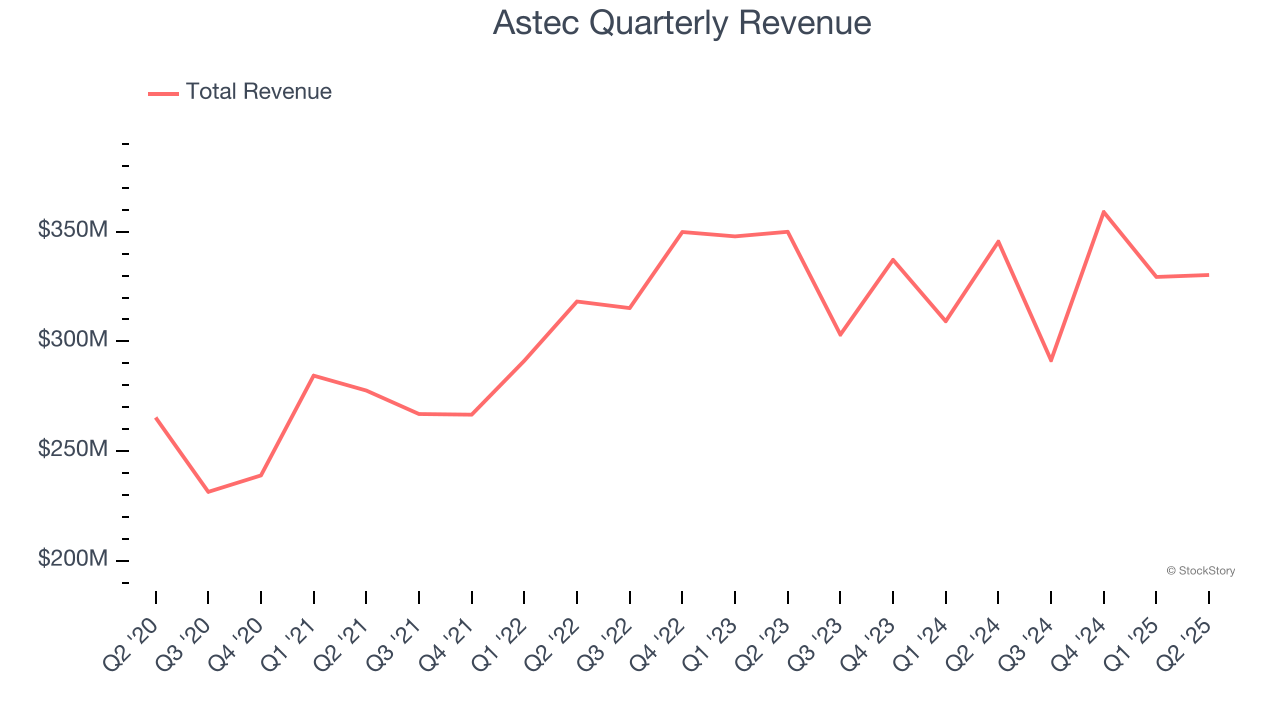
Long-term growth is the most important, but within industrials, a half-decade historical view may miss new industry trends or demand cycles. Astec’s performance shows it grew in the past but relinquished its gains over the last two years, as its revenue fell by 2% annually. Astec isn’t alone in its struggles as the Construction Machinery industry experienced a cyclical downturn, with many similar businesses observing lower sales at this time. 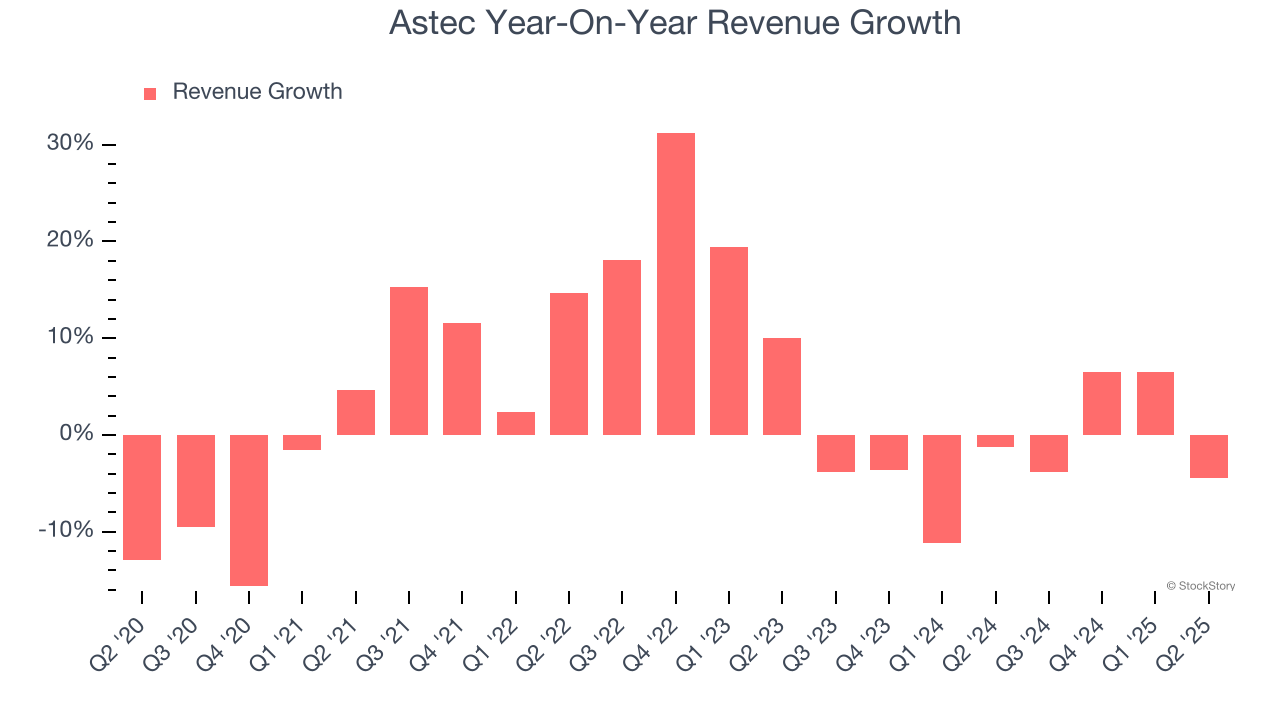
Astec also reports its backlog, or the value of its outstanding orders that have not yet been executed or delivered. Astec’s backlog reached $380.8 million in the latest quarter and averaged 28.2% year-on-year declines over the last two years. Because this number is lower than its revenue growth, we can see the company hasn’t secured enough new orders to maintain its growth rate in the future. 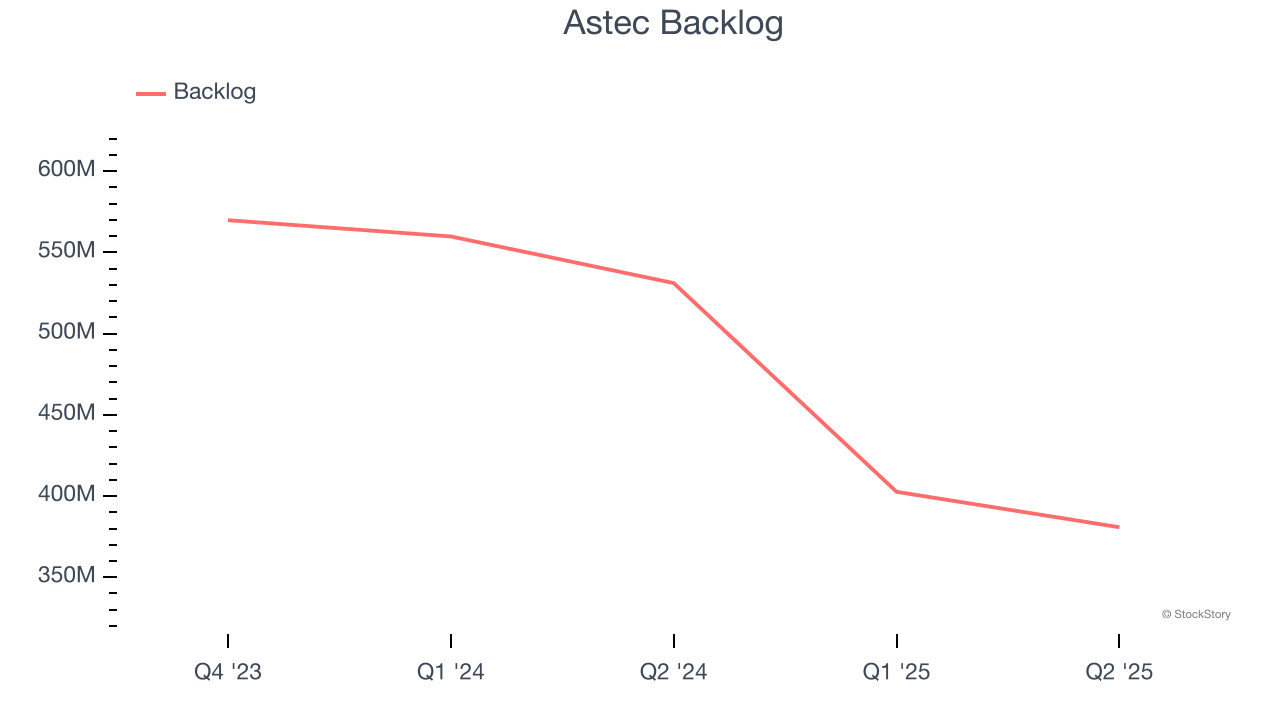
This quarter, Astec missed Wall Street’s estimates and reported a rather uninspiring 4.4% year-on-year revenue decline, generating $330.3 million of revenue.
Looking ahead, sell-side analysts expect revenue to grow 5% over the next 12 months. Although this projection indicates its newer products and services will catalyze better top-line performance, it is still below average for the sector.
Here at StockStory, we certainly understand the potential of thematic investing. Diverse winners from Microsoft (MSFT) to Alphabet (GOOG), Coca-Cola (KO) to Monster Beverage (MNST) could all have been identified as promising growth stories with a megatrend driving the growth. So, in that spirit, we’ve identified a relatively under-the-radar profitable growth stock benefiting from the rise of AI, available to you FREE via this link.
Operating Margin
Operating margin is a key measure of profitability. Think of it as net income - the bottom line - excluding the impact of taxes and interest on debt, which are less connected to business fundamentals.
Astec was profitable over the last five years but held back by its large cost base. Its average operating margin of 4.9% was weak for an industrials business. This result isn’t too surprising given its low gross margin as a starting point.
On the plus side, Astec’s operating margin rose by 3.8 percentage points over the last five years, as its sales growth gave it operating leverage.
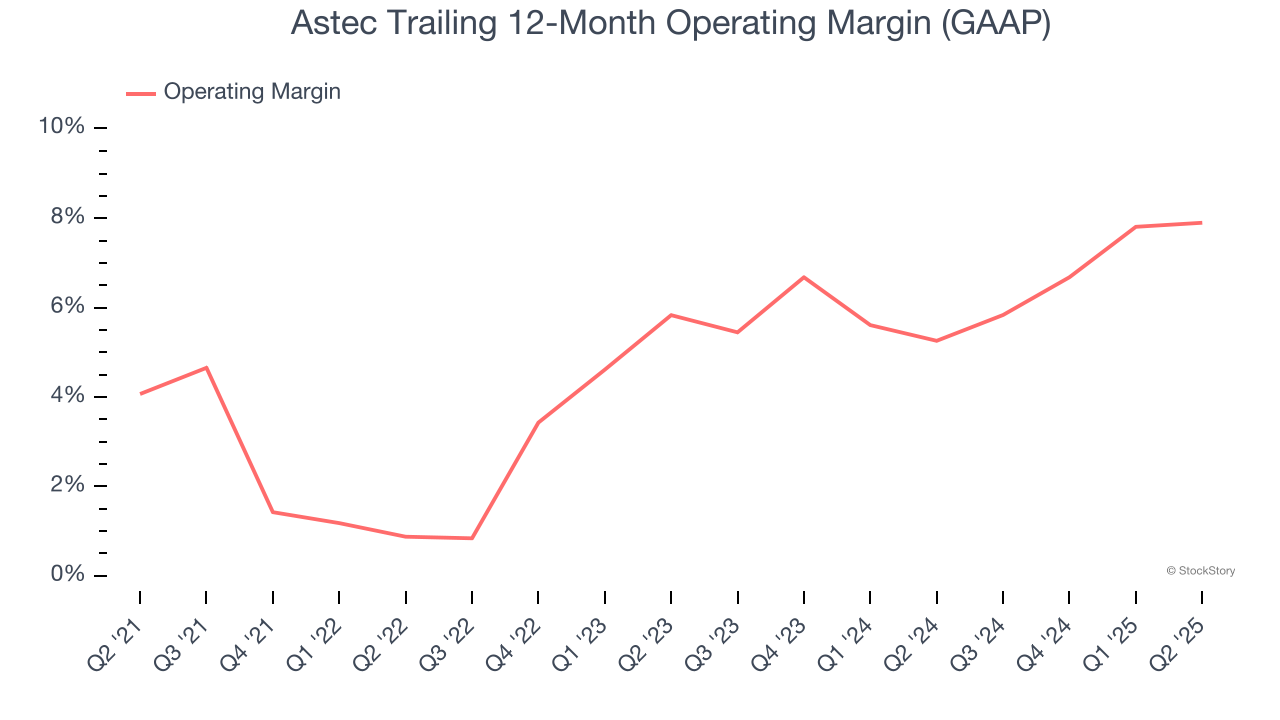
In Q2, Astec generated an operating margin profit margin of 6.5%, in line with the same quarter last year. This indicates the company’s cost structure has recently been stable.
Earnings Per Share
Revenue trends explain a company’s historical growth, but the long-term change in earnings per share (EPS) points to the profitability of that growth – for example, a company could inflate its sales through excessive spending on advertising and promotions.
Astec’s EPS grew at a remarkable 12.4% compounded annual growth rate over the last five years, higher than its 3.7% annualized revenue growth. This tells us the company became more profitable on a per-share basis as it expanded.
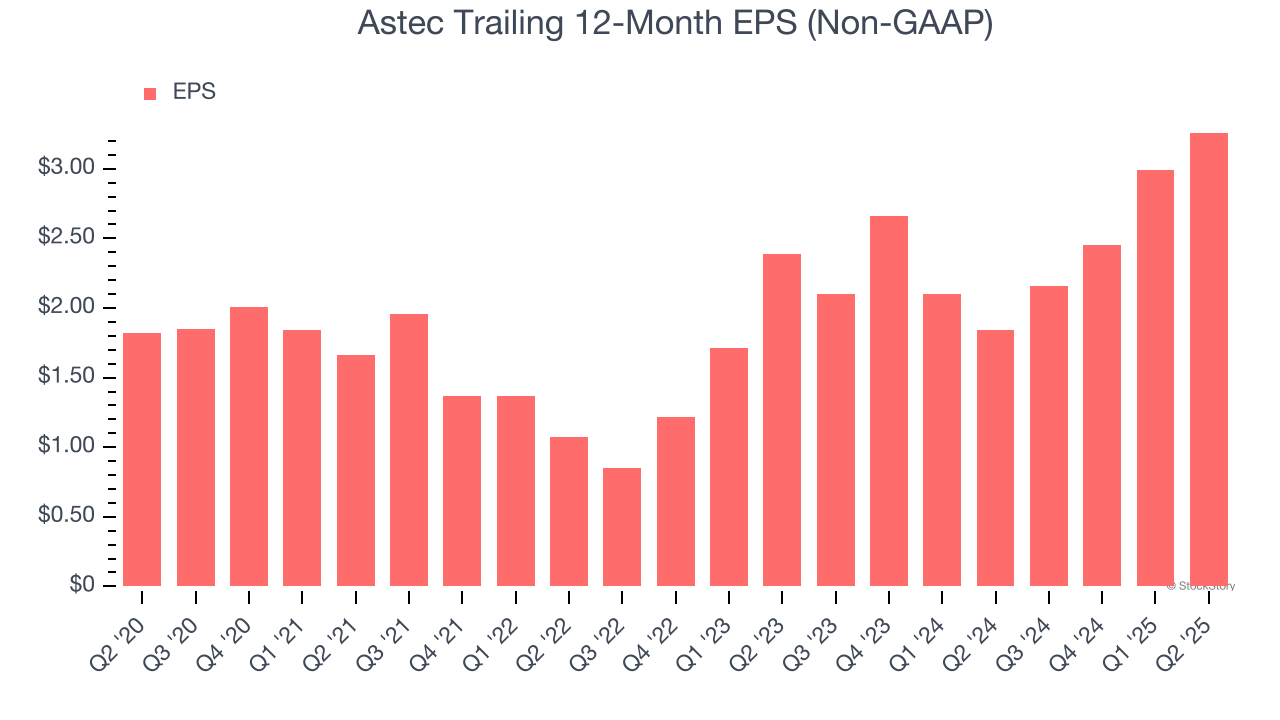
We can take a deeper look into Astec’s earnings quality to better understand the drivers of its performance. As we mentioned earlier, Astec’s operating margin was flat this quarter but expanded by 3.8 percentage points over the last five years. This was the most relevant factor (aside from the revenue impact) behind its higher earnings; interest expenses and taxes can also affect EPS but don’t tell us as much about a company’s fundamentals.
Like with revenue, we analyze EPS over a more recent period because it can provide insight into an emerging theme or development for the business.
For Astec, its two-year annual EPS growth of 16.8% was higher than its five-year trend. We love it when earnings growth accelerates, especially when it accelerates off an already high base.
In Q2, Astec reported adjusted EPS at $0.88, up from $0.61 in the same quarter last year. This print easily cleared analysts’ estimates, and shareholders should be content with the results. Over the next 12 months, Wall Street expects Astec’s full-year EPS of $3.26 to shrink by 20.6%.
Key Takeaways from Astec’s Q2 Results
We were impressed by how significantly Astec blew past analysts’ EBITDA and EPS expectations this quarter. We were also excited its full-year EBITDA guidance was raised, signaling business momentum. Overall, we think this was a decent quarter with some key metrics above expectations. The stock traded up 16.8% to $47.15 immediately after reporting.
Astec may have had a good quarter, but does that mean you should invest right now? What happened in the latest quarter matters, but not as much as longer-term business quality and valuation, when deciding whether to invest in this stock. We cover that in our actionable full research report which you can read here, it’s free.
